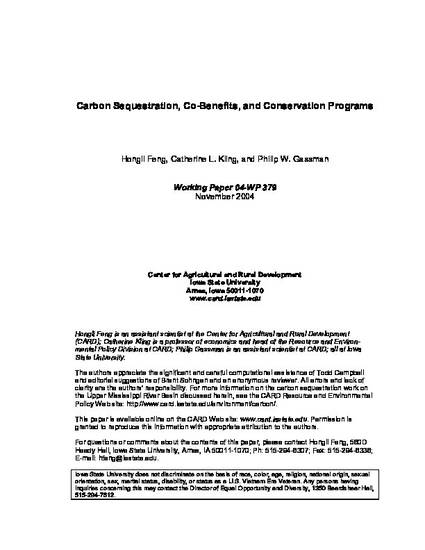
Article
Carbon Sequestration, Co-Benefits, and Conservation Programs
Choices
Document Type
Article
Publication Version
Submitted Manuscript
Publication Date
1-1-2004
Abstract
Capturing and storing carbon in biomass and soils in the agriculture and forest sector has gained widespread acceptance as a potential greenhouse gas mitigation strategy. Scientists increasingly understand the mechanisms by which various land-use practices can sequester carbon. Such practices include the introduction of cover crops on fallow land, the conversion of conventional tillage to conservation tillage, and the retirement of land from active production to a grass cover or trees. However, the policy design for implementing carbon sequestration activities is still being developed, and significant uncertainties remain concerning the cost effectiveness of carbon sequestration relative to other climate-change mitigation strategies.
Citation Information
Hongli Feng, Catherine Kling and Philip Gassman. "Carbon Sequestration, Co-Benefits, and Conservation Programs" Choices (2004) p. 19 - 24 Available at: http://works.bepress.com/hongli-hennessy/33/

This is a working paper of an article from Choices (2004): 19. Link to published version here.